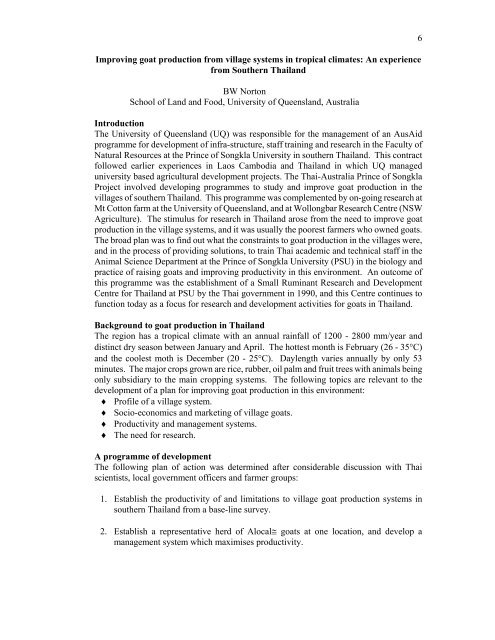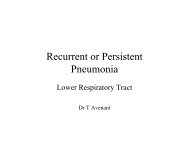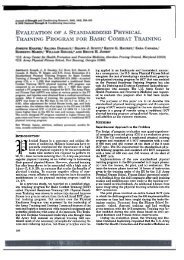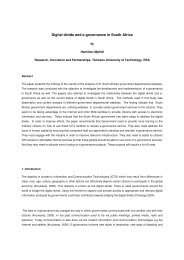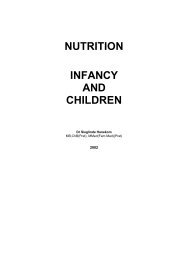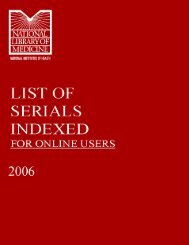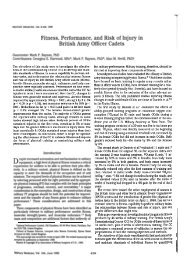Research and Training Strategies for Goat Production Systems in ...
Research and Training Strategies for Goat Production Systems in ...
Research and Training Strategies for Goat Production Systems in ...
You also want an ePaper? Increase the reach of your titles
YUMPU automatically turns print PDFs into web optimized ePapers that Google loves.
Improv<strong>in</strong>g goat production from village systems <strong>in</strong> tropical climates: An experience<br />
from Southern Thail<strong>and</strong><br />
BW Norton<br />
School of L<strong>and</strong> <strong>and</strong> Food, University of Queensl<strong>and</strong>, Australia<br />
Introduction<br />
The University of Queensl<strong>and</strong> (UQ) was responsible <strong>for</strong> the management of an AusAid<br />
programme <strong>for</strong> development of <strong>in</strong>fra-structure, staff tra<strong>in</strong><strong>in</strong>g <strong>and</strong> research <strong>in</strong> the Faculty of<br />
Natural Resources at the Pr<strong>in</strong>ce of Songkla University <strong>in</strong> southern Thail<strong>and</strong>. This contract<br />
followed earlier experiences <strong>in</strong> Laos Cambodia <strong>and</strong> Thail<strong>and</strong> <strong>in</strong> which UQ managed<br />
university based agricultural development projects. The Thai-Australia Pr<strong>in</strong>ce of Songkla<br />
Project <strong>in</strong>volved develop<strong>in</strong>g programmes to study <strong>and</strong> improve goat production <strong>in</strong> the<br />
villages of southern Thail<strong>and</strong>. This programme was complemented by on-go<strong>in</strong>g research at<br />
Mt Cotton farm at the University of Queensl<strong>and</strong>, <strong>and</strong> at Wollongbar <strong>Research</strong> Centre (NSW<br />
Agriculture). The stimulus <strong>for</strong> research <strong>in</strong> Thail<strong>and</strong> arose from the need to improve goat<br />
production <strong>in</strong> the village systems, <strong>and</strong> it was usually the poorest farmers who owned goats.<br />
The broad plan was to f<strong>in</strong>d out what the constra<strong>in</strong>ts to goat production <strong>in</strong> the villages were,<br />
<strong>and</strong> <strong>in</strong> the process of provid<strong>in</strong>g solutions, to tra<strong>in</strong> Thai academic <strong>and</strong> technical staff <strong>in</strong> the<br />
Animal Science Department at the Pr<strong>in</strong>ce of Songkla University (PSU) <strong>in</strong> the biology <strong>and</strong><br />
practice of rais<strong>in</strong>g goats <strong>and</strong> improv<strong>in</strong>g productivity <strong>in</strong> this environment. An outcome of<br />
this programme was the establishment of a Small Rum<strong>in</strong>ant <strong>Research</strong> <strong>and</strong> Development<br />
Centre <strong>for</strong> Thail<strong>and</strong> at PSU by the Thai government <strong>in</strong> 1990, <strong>and</strong> this Centre cont<strong>in</strong>ues to<br />
function today as a focus <strong>for</strong> research <strong>and</strong> development activities <strong>for</strong> goats <strong>in</strong> Thail<strong>and</strong>.<br />
Background to goat production <strong>in</strong> Thail<strong>and</strong><br />
The region has a tropical climate with an annual ra<strong>in</strong>fall of 1200 - 2800 mm/year <strong>and</strong><br />
dist<strong>in</strong>ct dry season between January <strong>and</strong> April. The hottest month is February (26 - 35°C)<br />
<strong>and</strong> the coolest moth is December (20 - 25°C). Daylength varies annually by only 53<br />
m<strong>in</strong>utes. The major crops grown are rice, rubber, oil palm <strong>and</strong> fruit trees with animals be<strong>in</strong>g<br />
only subsidiary to the ma<strong>in</strong> cropp<strong>in</strong>g systems. The follow<strong>in</strong>g topics are relevant to the<br />
development of a plan <strong>for</strong> improv<strong>in</strong>g goat production <strong>in</strong> this environment:<br />
♦ Profile of a village system.<br />
♦ Socio-economics <strong>and</strong> market<strong>in</strong>g of village goats.<br />
♦ Productivity <strong>and</strong> management systems.<br />
♦ The need <strong>for</strong> research.<br />
A programme of development<br />
The follow<strong>in</strong>g plan of action was determ<strong>in</strong>ed after considerable discussion with Thai<br />
scientists, local government officers <strong>and</strong> farmer groups:<br />
1. Establish the productivity of <strong>and</strong> limitations to village goat production systems <strong>in</strong><br />
southern Thail<strong>and</strong> from a base-l<strong>in</strong>e survey.<br />
2. Establish a representative herd of Αlocal≅ goats at one location, <strong>and</strong> develop a<br />
management system which maximises productivity.<br />
6


